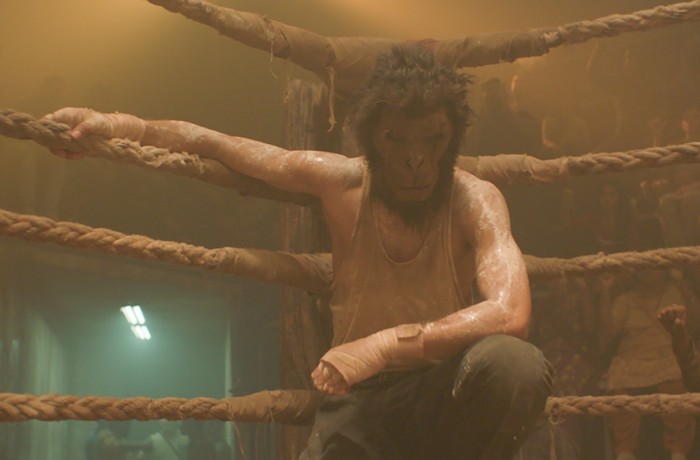Repetition is soothing. That's why Mother Goose is packed full of it. That's why most people mouth traditional prayers instead of inventing their own words. Why did so many of us watch the planes crash into the World Trade Center over and over again on TV? Did we expect to be soothed?
We were fixated on those images not because they offered us any additional information, but because they reiterated a story we were having trouble absorbing. In theory—which is all you had when you looked away—the facts were jarring; they didn't make sense. But onscreen, planes flying into buildings made almost too much sense. That split-second clip was pure cinema, a horrible shock to the system and a shamefully pleasurable source of awe. Trying to deal with what had happened, we resorted to a method both time-honored and Hollywood-approved: watching the pictures again and again.
United 93 is another kind of recitation, one far more ancient than Hollywood. It's a heroic epic, and it's already been told more than once—in newspaper and magazine articles by journalists, at length by The 9/11 Commission Report, and even, in a manner, by President Bush, who condensed the entire tale into a two-word, macho catch phrase: "Let's roll." Americans quoted in the New York Times and on TV and just about everywhere else are asking whether it's too soon for a movie. But a movie is just another way of telling a story, and this one makes the narrative we already know more complex.
There are some difficulties when it comes to telling the story of United Flight 93, the fourth plane hijacked on 9/11, whose passengers somehow overcame the terrorists and brought the plane to the ground before it could hurt anyone besides themselves. There's no suspense; we already know what's going to happen. The dialogue drips with dramatic irony—passengers telling family members, business associates, and one another about their plans for tomorrow and the next week—which is ironic, since 9/11 was supposed to have killed irony. We know in advance that not one of our heroes will remain alive at the end of the story. In fact, we understand that their form of heroism was a suicidal calculation, a choice more in the inhuman vein of Greek tragedy than in the familiar cast of American self-reliance. United 93 gets around this problem by eschewing traditional characterization: Though all of the (nonprofessional and low-profile) actors are portraying specific passengers, it's next to impossible to sort out who's who. We see them as their fellow passengers did: a mass of strangers and sudden allies, not individual saints. Other choices take the movie in a direction that satisfies action-movie expectations, even as it abandons the historical record. The passengers in this movie don't take a democratic vote about their course of action (as they actually did—a historical fact championed by theorist Elaine Scarry as evidence that it's possible to quickly and democratically respond to crisis post-9/11); instead, burly thirty- and fortysomething guys decide to do something and others seem to fall into line.
The movie is shot documentary-style and in nearly real-time, both in the plane and in the various military and civilian control centers which were entrusted with the responsibility—if not the power—to protect the populace from wayward planes. The film is grainy and frequently out of focus, and our perspective is strictly delimited (we don't hear the demurrals of White House representatives on the other line, just as we don't hear family members saying their tearful goodbyes in the Airfone handsets). Obsessive mimesis aside, the handheld cameras jolted around enough to convince my stomach I was watching The Blair Witch Project again.
But there are very good reasons to sit through United 93. On the emotional register, the film hits a perfectly chosen note, neither aggressive enough to seem callous nor excessively deferential, which would have felt mawkish. Whatever dramatic inventions were necessary for the scenes on the plane, the confusion on the ground is drawn straight from The 9/11 Commission Report. With so many officials glued to their radar screens, which were designed for one purpose, it isn't hard to understand why they couldn't see what was happening. The hijackers had fitted their planes with a new meaning that didn't show up in green and black. It needed a movie, and it needed a screen.
annie@thestranger.com

















